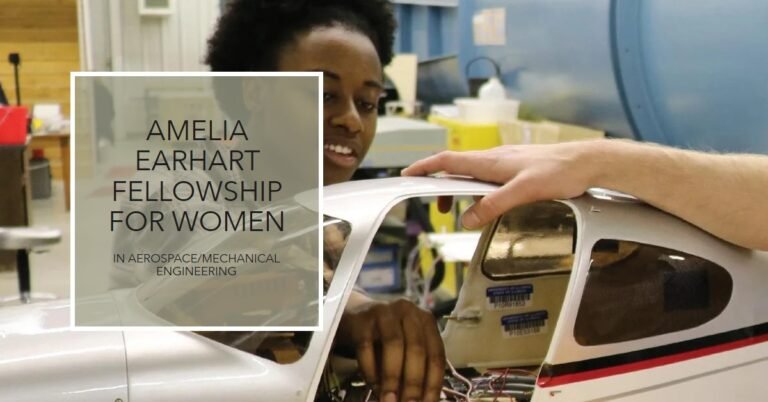Why It Is Important for Women to Be in STEAM
STEAM stands for science, technology, engineering, arts, and mathematics. These fields are essential for advancing human knowledge, solving global challenges, and creating new opportunities for economic and social development. However, women are still significantly underrepresented in STEAM careers, especially in leadership positions. According to the UNESCO Institute for Statistics, only 28% of researchers worldwide are women, and only 3% of Nobel Prizes in science have been awarded to women.
Why is it important for women to be in STEAM? Because women bring diverse perspectives, skills, and experiences that can enrich and improve the quality and impact of STEAM research and innovation. Women can also inspire and mentor the next generation of female STEAM leaders, who can contribute to the well-being and prosperity of their communities and the world. Moreover, women have the right to pursue their interests and passions in any field they choose, regardless of gender stereotypes or barriers.
In this article, we will explore some of the benefits and challenges of women in STEAM, and provide some tips and resources to help more girls and women pursue their STEAM dreams.
Benefits of Women in STEAM
Some of the benefits of having more women in STEAM include:
Enhancing creativity and innovation:
Women can bring different perspectives, ideas, and approaches to STEAM problems, leading to more creative and innovative solutions. For example, a study by the National Center for Women & Information Technology found that gender-balanced teams produce more patents than male-dominated teams.
Addressing societal needs and challenges:
Women can use their STEAM skills and knowledge to address the needs and challenges of their communities and the world, such as health, education, environment, and social justice. For example, Dr. Hayat Sindi, a Saudi Arabian biochemist and inventor, developed a low-cost device that can detect diseases like HIV and hepatitis in remote areas.
Boosting economic growth and development:
Women can contribute to the economic growth and development of their countries and regions by participating in the STEAM workforce and creating new products, services, and businesses. For example, Kiran Mazumdar-Shaw, an Indian entrepreneur and biotechnologist, founded Biocon, one of the largest biopharmaceutical companies in Asia.
Empowering women and girls:
Women can empower themselves and other women and girls by pursuing their STEAM passions and achieving their potential. They can also serve as role models and mentors for younger generations, and advocate for gender equality and inclusion in STEAM fields. For example, Malala Yousafzai, a Pakistani activist and Nobel Peace Prize laureate, is a champion of girls’ education and empowerment, especially in STEAM subjects.
Challenges of Women in STEAM
Some of the challenges that women face in STEAM include:
Gender stereotypes and biases:
Women often face negative stereotypes and biases that question their abilities, interests, and suitability for STEAM fields. These stereotypes and biases can affect their self-confidence, motivation, and performance, and discourage them from pursuing or continuing in STEAM careers. For example, a study by the American Association of University Women found that girls tend to lose interest and confidence in math and science around middle school, partly due to the influence of stereotypes and biases.
Lack of representation and support:
Women often lack adequate representation and support in STEAM fields, especially in leadership positions. They may face isolation, discrimination, harassment, or exclusion in their academic or professional environments, and have fewer opportunities for networking, mentoring, or career advancement. For example, a report by the World Economic Forum found that only 22% of AI professionals globally are women, and only 12% of machine learning researchers are women.
Work-life balance and family responsibilities:
Women often struggle to balance their work and life commitments, especially when they have family responsibilities such as childcare or eldercare. They may face difficulties in accessing or affording quality childcare, flexible work arrangements, or parental leave policies, and may experience pressure or guilt from their families or society. For example, a survey by the Pew Research Center found that 51% of working mothers say that being a parent has made it harder for them to advance in their careers, compared to 16% of working fathers.
Tips and Resources for Women in STEAM
Some of the tips and resources that can help more women pursue and succeed in STEAM fields include:
Developing interest and confidence in STEAM subjects:
Women can develop their interest and confidence in STEAM subjects by exploring their curiosity, learning new skills, and engaging in hands-on activities. They can also seek out positive feedback, encouragement, and recognition from their teachers, peers, and mentors. Some of the resources that can help women develop their interest and confidence in STEAM subjects include:
- Girls Who Code: A non-profit organization that aims to close the gender gap in technology by teaching girls coding and computer science skills.
- She Codes: A global community that offers free and low-cost workshops, events, and courses for women who want to learn how to code.
- Women in Science: A website that features stories, videos, and podcasts of inspiring women scientists from different fields and backgrounds.
Finding role models and mentors in STEAM fields:
Women can find role models and mentors in STEAM fields who can inspire them, guide them, and support them in their academic and career journeys. They can also network with other women in STEAM fields who can share their experiences, challenges, and opportunities. Some of the resources that can help women find role models and mentors in STEAM fields include:
- Women in Tech: A global platform that connects, supports, and empowers women in technology through events, mentorship, education, and advocacy.
- Women in Engineering: A professional organization that promotes the advancement and recognition of women in engineering and technology.
- Women in Mathematics: A website that showcases the achievements and contributions of women in mathematics and related fields.
Seeking opportunities and challenges in STEAM careers:
Women can seek opportunities and challenges in STEAM careers by pursuing their passions, exploring different options, and taking risks. They can also showcase their skills, achievements, and potential, and negotiate for fair and equal pay, benefits, and recognition. Some of the resources that can help women seek opportunities and challenges in STEAM careers include:
- Women in STEAM: A website that provides information, advice, and resources for women who want to pursue careers in STEAM fields.
- Women in Innovation: A community that supports and celebrates women who are innovating in various industries and sectors.
- Women in Leadership: A non-profit organization that empowers and connects women leaders from different fields and backgrounds.
FAQs
Conclusion
Women are vital for the success and progress of STEAM fields, which are crucial for innovation and social development. However, women still face many barriers and challenges that prevent them from fully participating and thriving in STEAM careers. Therefore, it is important for women to be in STEAM, and for society to support and encourage more girls and women to pursue their STEAM passions and potential. By doing so, we can create a more diverse, inclusive, and prosperous world for everyone.







